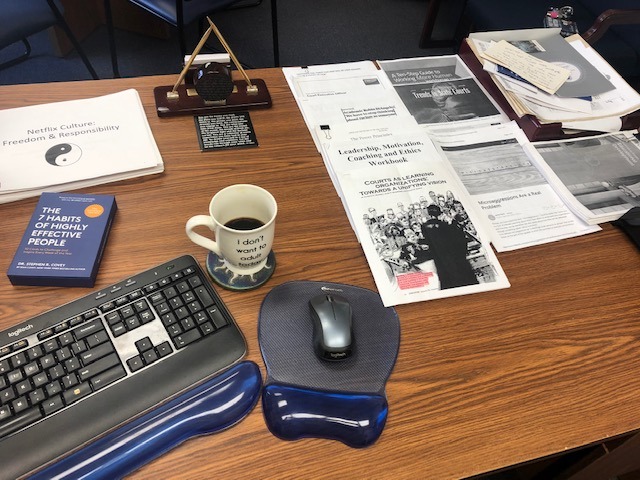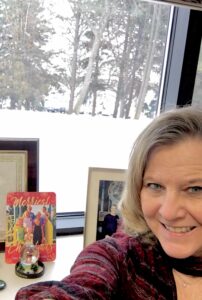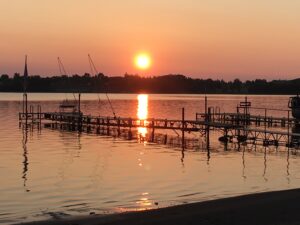By NASJE President Janice Calvi-Ruimerman

As I reflect upon the past and present years in my role as NASJE’s President, I think of the adage, “we may all be in the same storm, but we do not all have the same boat.” This may be a novel concept for some, but for us it’s very much how we weather the storms we face daily. Some navigate ocean liners or captain luxury yachts; others row boats or paddle life rafts, while a few of us make dangerous passage in a leaky “Father’s Day,” but despite our differences we somehow all manage to navigate perilous waters. Just when blue skies and smooth sailing seemed to be in our future, COVID-19 created the perfect storm and challenged our navigational skills. Over the last 10 months, I have marveled at the many examples of our tenacity, creativity and perseverance that protected us from the same fate as that of the Andrea Gail. In fact, I found that the events of last year highlighted our unique abilities to change course and navigate uncharted waters absent any guidance or foresight, and frankly, we shined.

When our NASJE voyage plan for 2019 was interrupted by, let’s just say, an INTERNATIONAL PANDEMIC, we did not abandon ship. No, we hunkered down, reassessed and adjusted our sails. Unbeknownst to us, we literally passage planned. As individuals within our respective organizations and in unison as members of NASJE, we appraised our plight, planned our next steps, executed new strategies, and we continue to monitor the “new normal.”
We began our trek with a series of calls to discuss the impact of COVID-19 and strategies for keeping afloat. Beyond sharing our respective state’s plans for navigating the storm, we discussed our “boats,” our navigational tools and resources, and our growing need for assistance and/or support. Proverbially, we heard, “I need an oar… does anyone have an extra oar?” “I have 7 lifejackets but only require 5, is someone in need of one?” Not quite, but more like, “Is anyone pre-benching remotely and if so, how?” “Who has mandatory education online?” Specifically, how do you “deliver training and education during a pandemic?” What are some “tips for engaging a virtual audience?” How do you communicate effectively on a web cam? Zoom, WebEx, Microsoft Teams – who is using what and why? And to further assist, our national partners sailed in with open and accessible opportunities to facilitate our journey such as, ICM courses available online and the National Judicial College’s, on demand, New Judge Orientation. We postponed our Annual Conference from 2020 to 2021 and in the interim, hosted regional webinars on such topics as “Experiential Learning.” Additionally, our New Professionals Committee hosted a series of “Coffee Talks” and a virtual “New Member Orientation.” That’s not all; our Education and Future’s Committees are collaborating to plan and deliver an “Online Learning Symposium” in the next few months, with the initial session entitled, The August Wilson Red Door Evolve webinar, being delivered by the National Center for State Courts. So, while we are all weathering the same storm, but with boats of a different capacity, we, as members of NASJE, have at our disposal a huge fleet ready, willing, and able to assist as needed.
As we navigate these uncharted waters, recognize that you are not alone on these stormy seas, and take solace in the fact that each of you and your herd of fellow UNICORNS have now learned to sail head on into this storm. You, my friends, are sailing!
Thank you for being you, and for the privilege of allowing me to call you, friends, colleagues, teammates, fellow-unicorns, and of late, my seaworthy crewmates!







